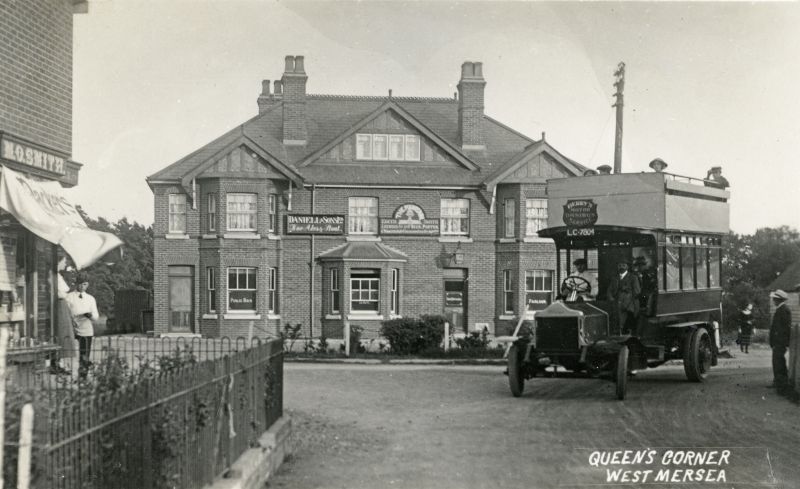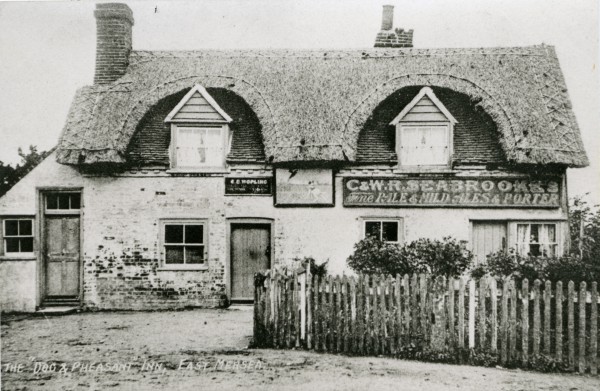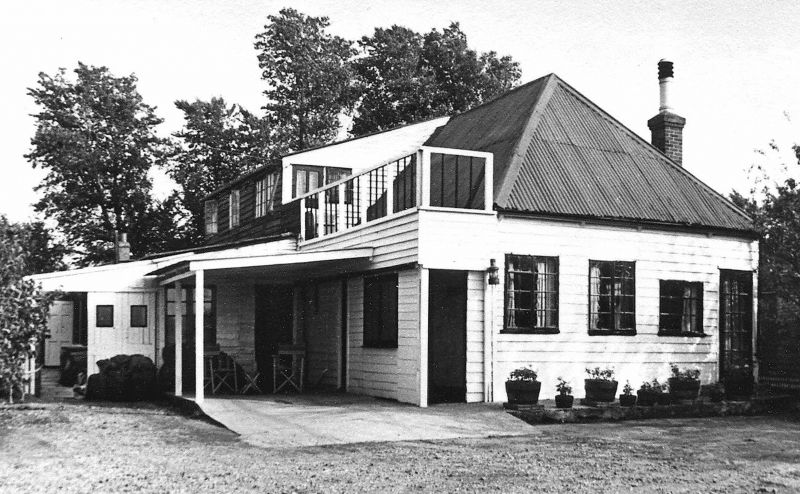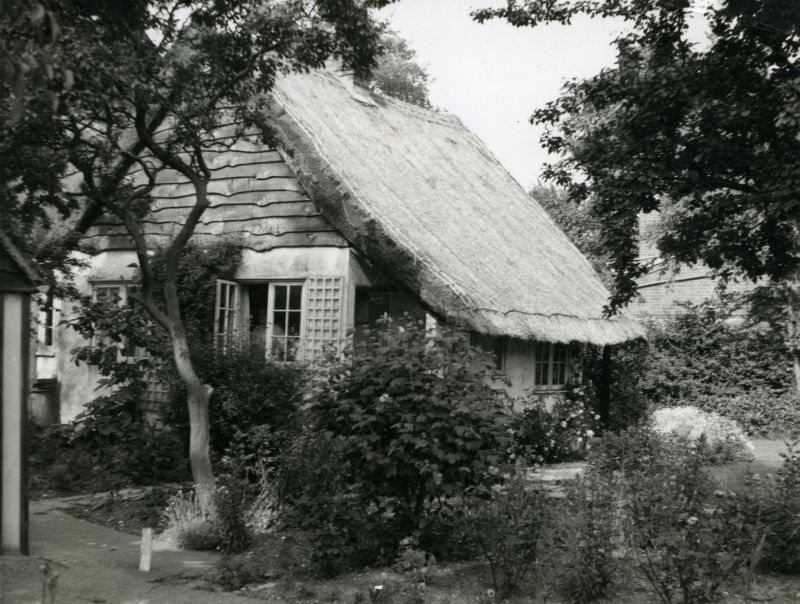|
Mersea Pubs Inns and Hotels
The 'old' Victory
The 'old' Victory is at the bottom of The Lane in West Mersea and probably dates back to Napoleonic times. It seems probable that it was originally the 'Leather Bottle' - this is the name that Baring Gould uses in his novel Mehalah - and was renamed 'Victory' to celebrate the Victory at Trafalgar.
A 'new' Victory was built around 1907 and the license and landlord William Trim both transferred there. The 'old' Victory became a private residence.
The Victory Hotel
The 'new' Victory is back up Coast Road, on the corner of what was once a footpath but is now Victory Road. It has undergone a number of changes over the years, but is still recognisable as the original hotel. A dance hall was built to the east in 1924, but was burnt down in 1942.
Winifred and Ronnie Hone kept the pub in the 1920s, and give us an interesting insight into life at the time. See Winifred Hone Memoirs.
Read More on Victory Hotel... |
|


'Old' and 'New' Victory Hotels
|
White Hart
The White Hart was in the centre of village life for many years. The oldest part of the building is in the centre of today's building and has been dated to 16th Century. Many Island organisations (including the various churches) held meetings there, the bus terminus was in the road outside, and there was radio broadcast from there in 1947.
The White Hart closed in 2013 and had a major restoration, reopening June 2022.
Read More... |
|

The White Hart around 1910
|
Fountain Hotels
The earliest Fountain we know about was in East Road, quite close to The Fox.The years before WW1 saw many development plans for West Mersea, including a railway. A new Fountain was built further west, on Queens Corner. There were suggestions that East Road would become Station Road and that the Fountain would be the Station Hotel, but the railway was never built. The new Fountain opened about 1913 and the old Fountain became Alpine Cottage. A dance hall was later built alongside the Hotel. Mary Smith and family owned and ran both the old Fountain and new Fountain, but in 1924 they sold the new Fountain to Colchester Brewing Company.
In 1999 the Fountain Hotel was demolished and Fountain Court housing built on the site.
Read More... |
|


'Old' and 'New' Fountain Hotels
|
The Fox
The Fox is in East Road and is a popular local pub. The earliest reference to the Fox that has been found was 1841 when William Rogers, Beerhouse Keeper was there. The Fox used to have a large clubhouse, where the car park is these days.
Read More... |
|

The Fox around 1914
|
Dog and Pheasant
The Dog and Pheasant used to be known as the Grey Goose - a 1769 document in Essex Record Office refers to it by that name, and the 1838 Tithe Map also calls it Grey Goose. However, by 1855 it was known as the Dog and Pheasant.
In 1928 the building was much extended on the west side, and since then, the old part has been used as the pub restaurant, a holiday home, and a private residence.
Read More... |
|

Dog and Pheasant, East Mersea
|
The Ship in The Lane
The Ship in West Mersea was in The Lane. It is not known when it closed, but 'Taffy the Welshman' was sleeping in the derelict pub when he was working on the West Mersea sewerage system around 1924. [ WW01_291 ]
The Ship was in a row of cottages in The Lane - they were demolished and the City Hall was built on the site.
The 1881 Census records Licensed Victualler George Aldous at the Ship Inn. By 1911 he is a retired Beerhouse Keeper living in a cottage in The Lane. |
|

|
Sailing and Social Club - The Coast Inn
The Sailing and Social Club ( The Soc'n Sail ) was opened 1930 by Winifred and Ronnie Hone. They had been keeping the Victory for 10 years, and then opened the Club in Arthur Hempstead's old shed, further down Coast Road. Within a few years, this was burnt out, and the Club rebuilt further back on the site. The Club thrived for many years with a mix of customers ranging from local oystermen to well-known visitors to Mersea. After Winifred Hone died in 1970, the Club was run by her daughters, but in 1973 was sold to became the Spanish restauarant Dinos, and then the Willow Lodge. December 1984 the Willow Lodge was damaged by fire. c2005 re-opened as The Coast Inn, and has become very-much part of the Mersea social scene.
Late in life, Winifred Hone wrote memoirs which give us a fascinating view of many of her customers of the time. See Winifred Hone Memoirs.
Read More on Sailing and Social Club...
|
|

Sailing and Social Club
|
The Ship at East Mersea
Did the pub really exist ? The evidence is a bit tenuous, but there must be something behind it.
Margery Allingham's novel Blackkerchief Dick is set in the Ship in East Mersea. This is based on a 200 year old character she met during a seance when staying in Mersea in 1924.
1841 and 1861 Census show the Underwood family living at Ship House at East Mersea.
In the 1930s, the Greenwood family bought Old Ship Cottage at East Mersea - it had a reputation for being haunted by the girl who died there in Blackkerchief Dick. The location is virtually the same as the Underwood family's Ship House. The cottage was extensively rebuilt and extended but has since been knocked down and replaced with a new house. The ghost may have moved next door to The Myth. There is a Ship field across the road from Old Ship Cottage.
The Mersea Island Golf Club Handbook names the 4th hole as the Ship and says it comes from an old smuggling inn that stood nearby, dating from Queen Anne's Days. |
|

Old Ship Cottage, East Mersea |
|
|



